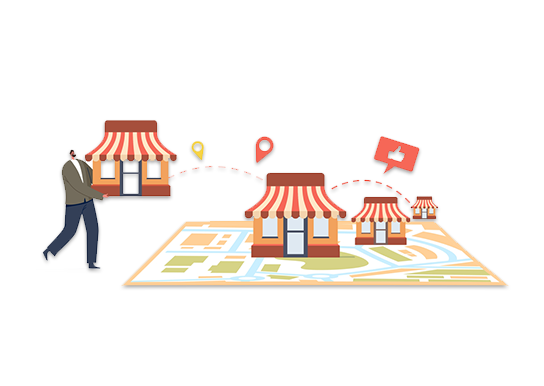How Do Restaurant POS Mobile Systems Impact the Efficiency of Order-Taking and Payment?

In today’s fast-paced dining environment, efficiency is key to ensuring customer satisfaction and maximizing operational success. One of the most transformative technologies in the restaurant industry is the restaurant POS mobile system. By streamlining both order-taking and payment processes, these systems are helping restaurants become more agile, reducing human errors, and improving the overall customer experience.
Mobile point-of-sale (POS) systems have revolutionized how restaurants operate by increasing the speed and accuracy of service, giving staff more mobility, and enhancing the payment process. In this article, we will explore how restaurant POS mobile systems are impacting efficiency in these crucial areas, the benefits they bring, and how they shape the future of the restaurant industry.
1. What Are Restaurant POS Mobile Systems?
Restaurant POS mobile systems are essentially portable versions of traditional point-of-sale systems. Instead of being tethered to a stationary terminal, these mobile POS systems can be installed on smartphones, tablets, or specialized handheld devices. They allow staff to process orders, accept payments, track sales, and manage customer data, all from the palm of their hands.
In a restaurant setting, these devices give staff the flexibility to move around the dining area freely, taking orders tableside, managing seating arrangements, and processing payments directly at the customer’s table. This leads to smoother workflows, quicker transactions, and a better overall experience for both the staff and customers.
2. Enhancing the Efficiency of Order-Taking
a. Real-Time Order Transmission
One of the most significant advantages of restaurant POS mobile systems is their ability to transmit orders to the kitchen in real time. Traditionally, servers would write down orders, bring them to the kitchen manually, or enter them into a stationary POS terminal. This process could be slow and error-prone, especially during busy shifts.
With a mobile POS system, however, servers can take orders directly at the table, which are instantly sent to the kitchen or bar for preparation. This seamless communication reduces the time it takes for orders to reach the kitchen, minimizes errors from handwriting misunderstandings, and ensures that orders are fulfilled more accurately.
b. Faster Table Turnover
By improving the speed of order-taking and reducing delays between placing and preparing orders, mobile POS systems contribute to faster table turnover. In a restaurant, table turnover is a key factor in increasing revenue. When customers can place their orders quickly and accurately, the kitchen can begin preparation sooner, and the entire dining process becomes more streamlined. This means that tables become available for new customers more quickly, improving the restaurant’s overall capacity to serve more diners during peak times.
c. Enhanced Communication Between Staff
In a busy restaurant environment, communication between servers, kitchen staff, and managers is critical. Mobile POS systems facilitate this communication by providing real-time updates and notifications. If a customer makes a special request or if an item is out of stock, the server can relay that information immediately through the mobile POS, allowing the kitchen to adjust accordingly. This reduces the likelihood of mistakes and ensures that everyone on staff is aware of important changes as they happen.
d. Customization and Special Orders
Many restaurants face challenges when it comes to taking and managing custom orders. Whether it’s accommodating dietary restrictions, allergies, or specific preferences, the ability to handle special requests efficiently is essential to customer satisfaction. Mobile POS systems allow servers to easily customize orders with specific notes and instructions, ensuring that the kitchen staff can see exactly what the customer wants. This minimizes confusion, reduces errors, and enhances the dining experience.
3. Streamlining the Payment Process
a. Tableside Payments for Convenience
One of the most visible benefits of restaurant POS mobile systems is the ability to process payments tableside. In traditional restaurant settings, customers would need to wait for the server to bring the bill, go to a stationary POS terminal, process the payment, and then return with a receipt. This back-and-forth process can be time-consuming, especially during busy periods.
With mobile POS systems, servers can bring the payment device directly to the customer’s table, where they can review the bill, select their payment method, and complete the transaction on the spot. This streamlined payment process reduces waiting times, enhances customer convenience, and allows the restaurant to turn tables over more quickly.
b. Multiple Payment Methods
Mobile POS systems are designed to accept a wide variety of payment methods, including credit and debit cards, mobile wallets (such as Apple Pay and Google Pay), and even contactless payments. This flexibility caters to customer preferences, allowing them to pay in the way that is most convenient for them. It also ensures that restaurants can accommodate modern payment trends, making transactions faster and more secure.
c. Splitting Bills with Ease
One of the more time-consuming tasks in the restaurant payment process is splitting the bill between multiple diners. Traditionally, this would involve complex calculations and multiple card transactions, which could delay the payment process. Mobile POS systems simplify this by allowing servers to easily split bills, assigning items to different customers or dividing the total amount evenly. This speeds up the process, reduces errors, and ensures a smoother checkout experience for large groups.
d. Integrated Tipping Features
Tipping is a significant part of the restaurant payment process, and mobile POS systems offer integrated tipping options that make it easy for customers to add gratuity. The system can display suggested tip amounts based on a percentage of the total bill, streamlining the process and encouraging customers to tip fairly. This convenience helps servers increase their earnings while making the payment process faster and more efficient.
4. Improving Overall Customer Experience
The efficiency of order-taking and payment processes directly affects the customer experience in a restaurant. Mobile POS systems not only speed up transactions and reduce errors but also create a more personalized and convenient dining experience.
a. Reduced Wait Times
Faster order-taking and payment processes mean that customers spend less time waiting at each stage of their dining experience. This is especially important during peak hours when restaurants are busiest. By reducing wait times for both placing orders and making payments, mobile POS systems contribute to a more enjoyable dining experience, leading to higher customer satisfaction.
b. Personalized Service
Mobile POS systems can also store customer data, such as preferences, allergies, and past orders, allowing servers to provide more personalized service. For example, a customer’s favorite dishes can be remembered and suggested on subsequent visits, or the system can alert servers to any food allergies, ensuring the customer’s safety. This level of personalization helps build stronger relationships with customers and encourages repeat visits.
c. Reduced Errors and Disputes
Errors in order-taking and billing can lead to customer dissatisfaction and disputes. Mobile POS systems help mitigate these issues by providing accurate, real-time information. Orders are transmitted directly to the kitchen, reducing the risk of miscommunication, and the payment process is handled transparently, with customers able to review their bills on the spot. This reduces the likelihood of mistakes and fosters trust between the restaurant and its patrons.
5. Operational Benefits for Restaurants
In addition to improving the customer experience, restaurant POS mobile systems offer several operational benefits that enhance overall efficiency and profitability.
a. Real-Time Sales Data and Analytics
Mobile POS systems provide restaurants with real-time access to sales data and analytics, allowing managers to track performance, monitor inventory, and make informed decisions. This data can be used to identify popular menu items, track peak hours, and optimize staffing levels. It also provides valuable insights into customer behavior, helping restaurants refine their marketing strategies and menu offerings.
b. Enhanced Security
Mobile POS systems are equipped with advanced security features to protect both the restaurant and its customers. These systems often include encryption, tokenization, and secure payment processing, reducing the risk of fraud and ensuring that sensitive customer information is protected.
c. Scalability and Flexibility
For growing restaurants, mobile POS systems offer scalability and flexibility. Whether opening a new location or hosting a pop-up event, mobile POS systems can easily be adapted to different environments. This flexibility allows restaurants to expand their operations without the need for extensive infrastructure investment.
Conclusion
Restaurant POS mobile systems have revolutionized the way restaurants handle order-taking and payment processes, making them more efficient, accurate, and customer-friendly. By streamlining these critical functions, mobile POS systems enhance the overall dining experience, reduce errors, and improve operational efficiency. As technology continues to evolve, mobile POS systems will likely become even more integral to the success of restaurants, helping them meet the demands of an increasingly digital and fast-paced world.



